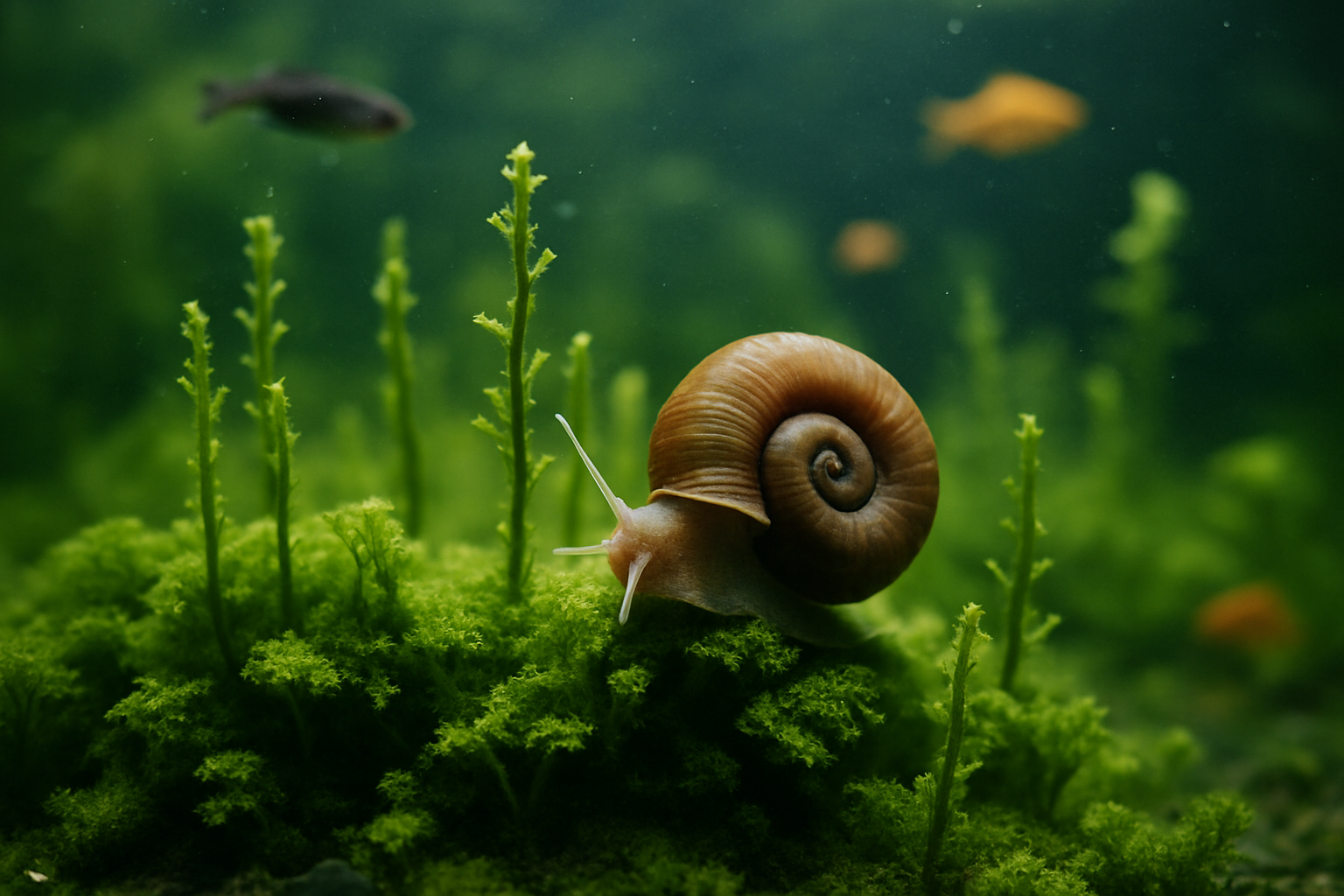Aquatic Snails: Unsung Heroes of Freshwater Ecosystems
Beneath the surface of our lakes, ponds, and rivers, a fascinating world of tiny gastropods quietly shapes aquatic environments. Freshwater snails, often overlooked in favor of more charismatic aquatic creatures, play crucial roles in maintaining ecosystem balance and water quality. This article delves into the hidden world of these remarkable mollusks, exploring their diverse adaptations, ecological importance, and the challenges they face in our changing world.

The Diversity of Freshwater Snails
Freshwater snails come in a staggering variety of shapes, sizes, and colors. Some species, like the Great Ramshorn snail, can grow up to 4 centimeters in diameter, while others, such as the Pygmy Snail, measure less than a millimeter. This diversity extends to their shell shapes, which can range from flat discs to elongated spirals, each adapted to specific environmental conditions and predator pressures.
Ecological Roles and Importance
These small mollusks serve as nature’s janitors, constantly grazing on algae and detritus that accumulate in water bodies. This cleaning action helps maintain water clarity and prevents excessive algal growth, which can lead to harmful algal blooms. Additionally, snails play a crucial role in nutrient cycling, breaking down organic matter and making essential nutrients available to other organisms in the ecosystem.
Adaptations for Aquatic Life
Freshwater snails have evolved remarkable adaptations to thrive in their watery homes. Many species possess a specialized organ called an operculum, a trapdoor-like structure that can seal their shell opening, protecting them from predators and allowing survival in temporarily dry conditions. Some snails have even developed the ability to breathe atmospheric air, enabling them to colonize oxygen-poor environments.
Snails as Bioindicators
Scientists and environmental managers increasingly recognize the value of freshwater snails as bioindicators of ecosystem health. These gastropods are sensitive to changes in water quality, pH levels, and pollution, making them excellent early warning systems for environmental degradation. Monitoring snail populations and diversity can provide valuable insights into the overall health of freshwater ecosystems.
Threats and Conservation Challenges
Despite their ecological importance, many freshwater snail species face significant threats. Habitat loss, pollution, and the introduction of invasive species have led to declining populations worldwide. Climate change poses an additional challenge, altering water temperatures and chemistry in ways that can be detrimental to snail survival. Conservation efforts are underway to protect these unsung heroes, including habitat restoration projects and captive breeding programs for endangered species.
The Role of Snails in Aquaculture
In recent years, there has been growing interest in utilizing freshwater snails in aquaculture systems. These gastropods can serve as natural cleaners in fish tanks and ponds, helping to maintain water quality and reduce the need for chemical treatments. Some species, like the Malaysian Trumpet Snail, are particularly valued for their ability to aerate substrate and consume detritus in aquarium environments. The market for aquarium snails has seen steady growth, with prices ranging from a few dollars for common species to over $50 for rare or colorful varieties.
Snail-Inspired Technologies
The unique adaptations of freshwater snails have inspired innovative technologies across various fields. Researchers are studying the adhesive properties of snail mucus to develop new medical adhesives and drug delivery systems. The intricate spiral patterns of snail shells have also influenced designs in architecture and engineering, leading to more efficient and aesthetically pleasing structures.
Educational Opportunities
Freshwater snails offer excellent opportunities for environmental education and citizen science initiatives. Their accessibility and ease of observation make them ideal subjects for school projects and community-based monitoring programs. By engaging the public in snail conservation efforts, scientists hope to raise awareness about the importance of freshwater ecosystems and the need for their protection.
Future Research and Discoveries
As our understanding of freshwater snails grows, so does the potential for new discoveries. Ongoing research is exploring the potential medicinal properties of snail mucus, which has shown promise in wound healing and anti-aging applications. Additionally, studies on snail genetics and evolution are providing insights into how species adapt to changing environments, offering valuable lessons for conservation in the face of global climate change.
In conclusion, freshwater snails emerge as unsung heroes of our aquatic ecosystems, playing vital roles that extend far beyond their small size. From maintaining water quality to inspiring technological innovations, these remarkable gastropods deserve greater recognition and protection. As we face mounting environmental challenges, the humble freshwater snail may hold keys to understanding and preserving our precious freshwater resources for future generations.





